It has been quite a while since my last post, no thanks to two and a half weeks of reservist duty.
Where did I last stop?.....OK… Early next morning, at 7 am (that’s 2 am S’pore time) I looked out of the window and saw a dreary, misty sight. It was low clouds and misty and damp!
I had spent the night before sorting out my fly boxes, flies, and re-checking the bag (I had driven 2 hrs to a river once before a found out I had brought a reel loaded with 4 wt line when I had with me a 6 wt rod).
“Hell if I’m going to waste the morning just because it looked like horrible,sleep in weather in the city!” I had to psyched myself up for the day ahead.
It was around 15 °C that morning. I drove to Denny’s for breakfast as I pondered my options for the day.
1) I could drive north of Christchurch to the Hurunui River that I never had any luck in, or
2) Drive south to that river that Mike recommended…now what was that name again??
I looked at the road map when I got back to the car. There were two rivers that started with ‘O’ – the Opahu and the Orari. They were both around the same area.. so confusing!.......I decided to just drive south, taking my chance with the weather and to check out the two rivers anyway.
Driving down on Highway 1, the weather was coming in waves of low clouds and drizzle with radio weather forecasts for rain in the Canterbury region. Pressing on, I drove past the town of Ashburton on towards Rangitata for the next one and a half hours before taking Highway 79 towards the mountains. (see this site for map of Central South Island of New Zealand and its numerous rivers
http://www.nzfishing.com/FishingWaters/CentralSouthIsland/CSIRegion/CSICentralSouthIslandregion.htm)
After almost 2 hours of driving, I crossed the Orari River. It looked more like a stream and access from the bridge didn’t look very promising, so onward I drove. After 20 minutes or so, I came across a bridge with a sign that said ‘Opahu River Bridge’. I immediately took the first turn off and went down the dirt road that lead to the river.
There was already a campervan parked by the river so I thought that I might have to go further downstream in case they were fishing – there is certain fishing etiquette to adhere to in these parts. However, I stopped the car and went up to the folks in the campervan and asked if they were fishing, just in case. Good thing I thought to ask because they were just parked there overnight and were moving on southward. It was already about 11:15 am by then and I didn’t waste any time getting into my waders and gearing up.
The weather was still overcast with an upstream wind blowing. I stood at the waters edge and started to fish with a two nymph rig of my 4 wt rod. The river looked very appealing until the nymphs I was fishing started to catch on to the bottom. I pulled in my flies and saw that the nymphs were covered in algae. This happened on every drift and was very frustrating. I moved upstream on the riverside to the bottom of the bridge and tried some of the holes there but no luck. Moving further upstream, I spent almost an hour fruitlessly nymphing the water and removing scum from the flies.

Sidenote: On my entry into New Zealand, I was given a leaflet informing visitors of the Didymo problem that the country is currently fighting. Basically, Didymo is an alga that is foreign to New Zealand and is choking up numerous water ways. More information can be found at
http://www.biosecurity.govt.nz/didymo . By all descriptions, the algae in the Opahu River didn’t look like Didymo, but better that I didn’t step into the water. Moving back to the car, fishless, I pondered my next course of action.
The map showed that I wasn’t too far from the famous Lake Takepo. There is good lake fishing at Takepo, but I was more interested in river fishing. I didn’t have much information on the rivers in the Mackenzie region that Lake Takepo is located in as I didn’t intend to come down so far south. But seeing how the weather was looking, me fishless, and that it was only going to be another hour drive, I pressed on.
As I passed through Burkes Pass into the Mackenzie basin, the sky opened up and the clouds disappeared. The mountain range behind me held up the low clouds and before me was clear blue sky! This was looking good! Beautiful!
Driving into the Mackenzie Basin

After another 20 minutes driving, I reached Lake Takepo. I stopped at a hotel to ask for directions for the river or the nearest fishing spot. After some vague directions from the girl at the reception counter, (She wasn’t even a Kiwi!) I drove out of town and found my way to the river. What a sight and relief to see this lovely blue river before me! It was braided in some parts and had a series of nice runs, best of all, I saw some guys fishing! I drove further downstream and got ready to fish.
Driving past Lake Takepo and passing the canal from Hydro dam

It was still as windy, if not more. I opted to fish my 6 wt to best battle the wind.
Stepping cautiously into the river, I checked a couple of rocks to see what kind of insect life was around and found some mayfly and caddis nymphs. I tied on a size 14 yellow Humpy and on a short dropper, a size 16 Pheasant Tail Nymph (PTN). Starting at the head of a run, I began casting in the water nearest to me. Slowly moving toward the middle of the river, I spotted a dark torpedo shape on the opposite bank. It looked very much like a trout about a foot long.

“Could it be a trout?” I wondered. The shape was not moving and was tight against the bank in only 20 cm of water. I tried a few exploratory casts in front of the ‘fish’ – no reaction! The wind was blowing upstream from my right to left and there was fast moving water between the target and me. Trying to cast to a target only 15 -18 ft in front of you with 12ft of leader and 3ft of fly line out of the rod tip, PLUS the wind – it’s pretty difficult! Working hard to fight the wind and drag, I tried to get in a couple of casts to the fish, but still no reaction. Getting bolder, I moved closer and cast again. Distracted by the wind and uneven stones beneath my feet, I overshot the cast and the nymph got tangled in some roots at the waters edge. By that time I was sure that all my efforts had been wasted on a piece of wood.
I was just in reach of the fly to untangle it when the ‘dead’ piece of wood came alive and bolted into the fast water just two meters below me. The broken water must have distorted my silhouette as the fish didn’t swim away. But in my excitement, I put in a few lousy presentations that finally spooked the fish downstream. Bloody stupid of me! Well, at least I knew that this river held fish!
The River - check out the clarity!

With a renewed sense of purpose, I scanned the waters upstream through the Polaroids and started to work my way up. Clean, clear water is great for stalking fish, but if you can see the fish, the fish can also see you. After one and a half hours, almost 1 km and another spooked fish later, I was really starting to doubt if I was really cut out for this kind of fishing. I eventually worked my way up the river till I could see the other fishermen I had seen on my way in earlier.
I moved out of the water to pass by them and waved a ‘hello’. I noticed that of the two gentlemen, one was nymphing with a fly rod, and the other was spinning with a minnow lure. Not more than 30m after I had walked past the two men did I heard a shout. Turning around, I saw the fly fisherman’s rod in a deep bend and he was trying to gain control of his fly line. Moving closer, I watched him fight the fish until his rod suddenly bounce back, pointing straight up to the sky.
“What happened?” I asked. The man with the spinning rod explained that his friend had lost the fish, a nice one, around an underwater boulder. I inquired if they fished here often and if there were any good fish in this river. He told me that his friend had caught and released three fish already and that this river was quite dependable for trout. I thanked the man and wished him good day.
“Three fish!! And I bet they weren’t there very long!” I cursed to myself. Well, local knowledge helps I guess. By now I was about 1.5 km from where I parked my car. I decided that I would fish the same stretch of river once more – downstream. I backtracked away from the river giving those guys space to fish walking parallel to the river for a few hundred meters before heading to the water. This time I shortened the leader to 9 feet and tied on a size 14 Beadhead Hare and Copper and a size 16 PTN at the point.
Starting at the head of a riffle, I began to try and systematically cover the water by casting down and across then taking a step downstream before doing the same cast again. It was already 4:30 pm and bright and sunny. By 5 pm and 50 m down river, I was beginning to pray for fish -- 3 separate outings to 2 major rivers in New Zealand, and yet, no famous big NZ trout.
Finally, casting to drift my nymphs in front of a mid stream submerged boulder, the flies stopped. Thinking that they were caught up on a stone, I lifted the rod and felt that indeed they were attached to the riverbed. Putting more back pressure to the rod, I suddenly felt a pulse in the line and ‘riverbed’ started to swim off downstream! I immediately lifted the rod to 45 degrees and a put a nice arc in my 6 wt rod. Keeping my rod tip high and stripping in line, I could feel the fish using the current of the river to its advantage. The fish showed itself to be a rainbow trout about 40 cm long with all its fins fully erect, creating a much drag as it could. Using side strain and trying not to give line to the fish, I reeled up the slack line to fight the fish off the reel. I slowly walked the fish back towards the riverbank and the fish came in quietly… that was until it realized it was in shallow water! The rainbow shot off across and down the river with line slipping through my fingers. Taking into account the line drag in the water plus the line resistance through my fingers, I was trying my darnest not to pop the 5lb tippet I was using. Finally, knees shaking and hands trembling, the rainbow came into view again. With only 10 cm of fly line out of the rod tip, I opted to walk back up the riverbank and ‘walk’ the fish in. As it laid on the sand, I whipped out my camera and fired off a couple of shots (Photos not that good ‘coz hands still shaking).
My prize Beauty!
The rainbow was a little larger than I estimated. About 45cm and 1.5 to 2 kg, it had taken the size 16 PTN. Removing the fly, I picked it up carefully and cradled it in the current. I thought the fish would take a while to recover given the fight, but in 2 seconds it flicked its tail and swam off, disappearing from sight.

Words cannot describe the euphoria and relief as I watched the trout swim off! FINALLY!!, after driving so far, after two fail outings, I can truly say that I caught a noteworthy NZ trout! Not that I didn’t catch anything in my other outings… but to finally hook and land a big trout from a flowing river in such scenic countryside, it’s ….like living a dream!!!
Mission accomplished, I fished the remaining water aimlessly till I reached the car. It was almost 6:30 pm by now and it was time I started making my way back. Good thing summer means late sunsets…..by the time I changed out and packed up it was almost 7 pm. Before I left the river, I stopped to take a few more picture of the whole place while there was still ample sunlight. From the town of Takepo, I drove non stop till I reached Christchurch city, a journey of almost 3 and a half hours.

Thus ends an ‘epic’ journey for me. I’ve fished for trout in Japan, Canada and also the UK, but this outing was by far the most memorable. It has inspired me to delve deeper into the numerous facets of this sport or ‘art’ that we call Fly Fishing. As promised to our friend Billy, I’ll endeavour to contribute whatever two cents worth I can to this blog.
I’ll try to dig up my other photos of New Zealand and post them next time.
Cheers!





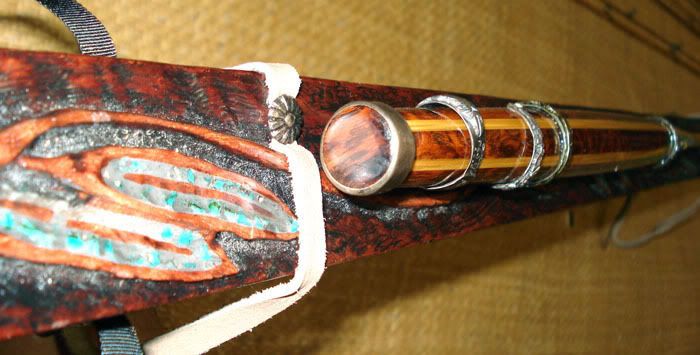
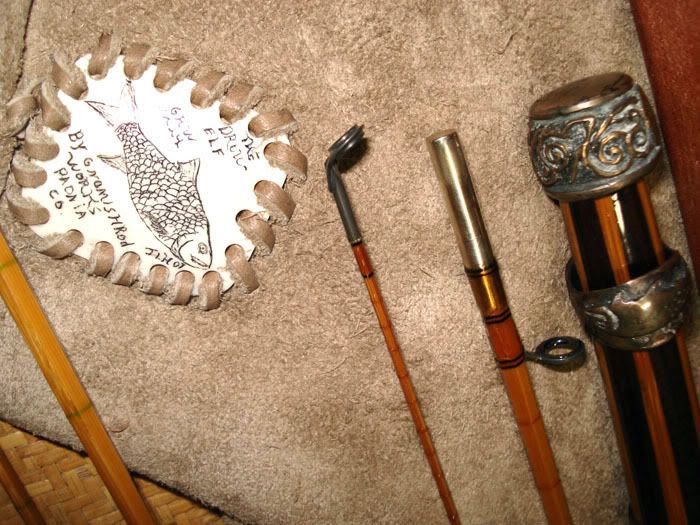
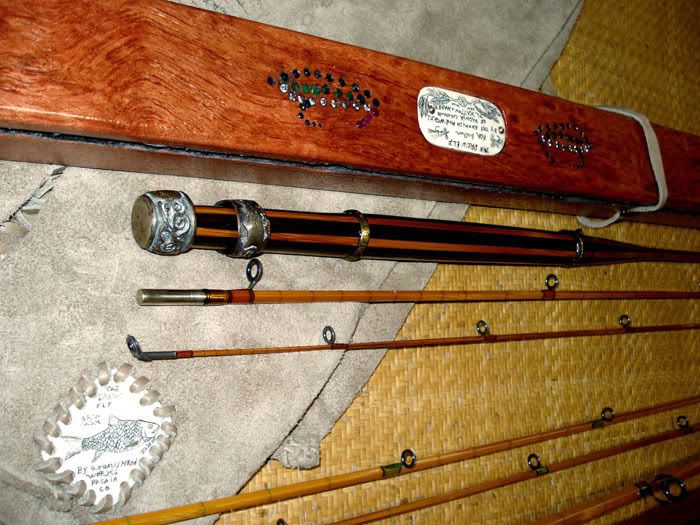
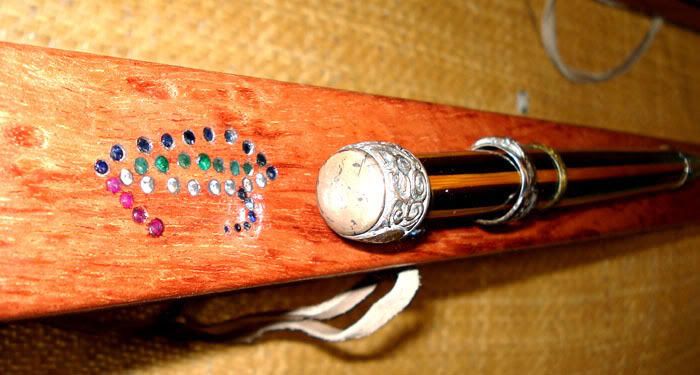

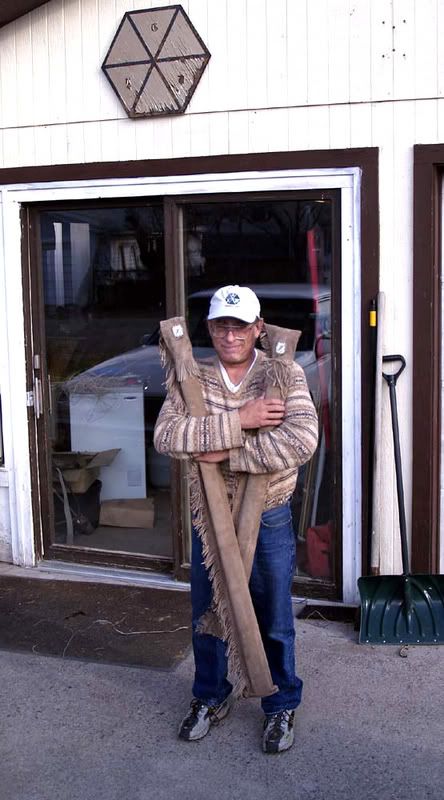

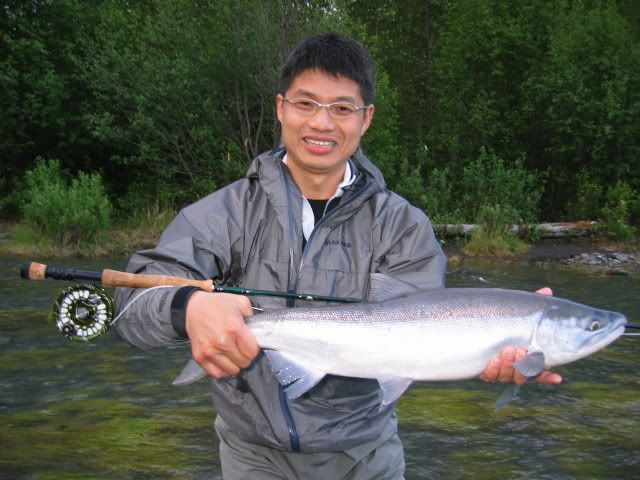



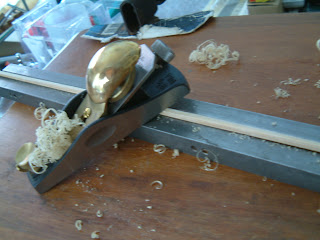













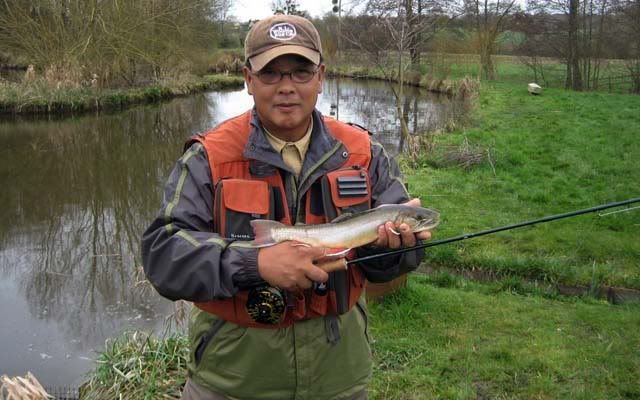






 “Could it be a trout?” I wondered. The shape was not moving and was tight against the bank in only 20 cm of water. I tried a few exploratory casts in front of the ‘fish’ – no reaction! The wind was blowing upstream from my right to left and there was fast moving water between the target and me. Trying to cast to a target only 15 -18 ft in front of you with 12ft of leader and 3ft of fly line out of the rod tip, PLUS the wind – it’s pretty difficult! Working hard to fight the wind and drag, I tried to get in a couple of casts to the fish, but still no reaction. Getting bolder, I moved closer and cast again. Distracted by the wind and uneven stones beneath my feet, I overshot the cast and the nymph got tangled in some roots at the waters edge. By that time I was sure that all my efforts had been wasted on a piece of wood.
“Could it be a trout?” I wondered. The shape was not moving and was tight against the bank in only 20 cm of water. I tried a few exploratory casts in front of the ‘fish’ – no reaction! The wind was blowing upstream from my right to left and there was fast moving water between the target and me. Trying to cast to a target only 15 -18 ft in front of you with 12ft of leader and 3ft of fly line out of the rod tip, PLUS the wind – it’s pretty difficult! Working hard to fight the wind and drag, I tried to get in a couple of casts to the fish, but still no reaction. Getting bolder, I moved closer and cast again. Distracted by the wind and uneven stones beneath my feet, I overshot the cast and the nymph got tangled in some roots at the waters edge. By that time I was sure that all my efforts had been wasted on a piece of wood.


 Words cannot describe the euphoria and relief as I watched the trout swim off! FINALLY!!, after driving so far, after two fail outings, I can truly say that I caught a noteworthy NZ trout! Not that I didn’t catch anything in my other outings… but to finally hook and land a big trout from a flowing river in such scenic countryside, it’s ….like living a dream!!!
Words cannot describe the euphoria and relief as I watched the trout swim off! FINALLY!!, after driving so far, after two fail outings, I can truly say that I caught a noteworthy NZ trout! Not that I didn’t catch anything in my other outings… but to finally hook and land a big trout from a flowing river in such scenic countryside, it’s ….like living a dream!!!







